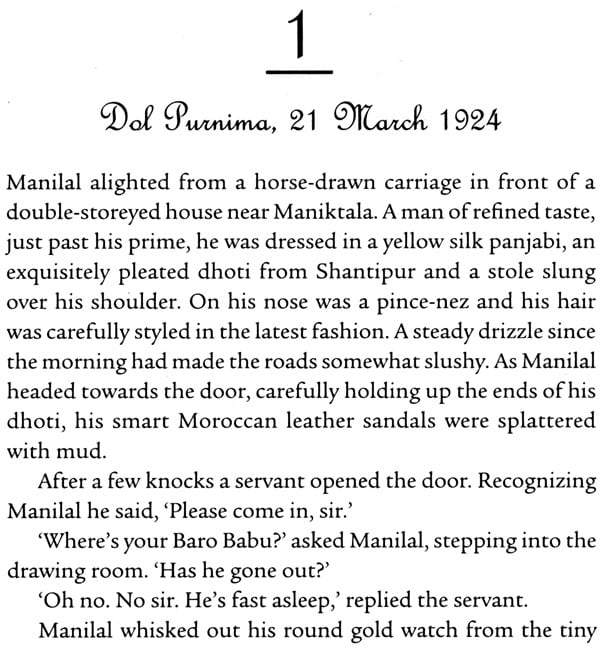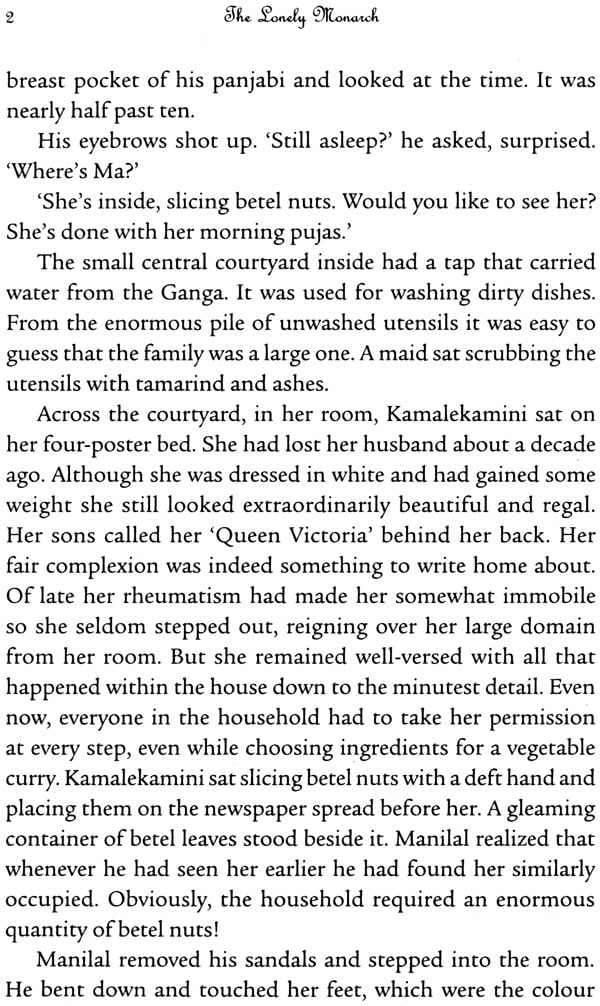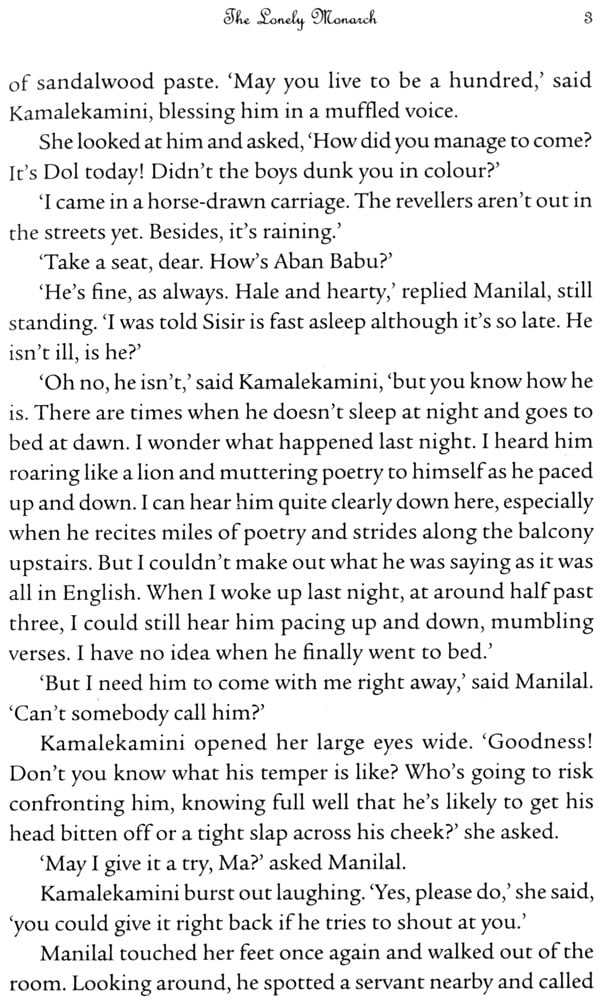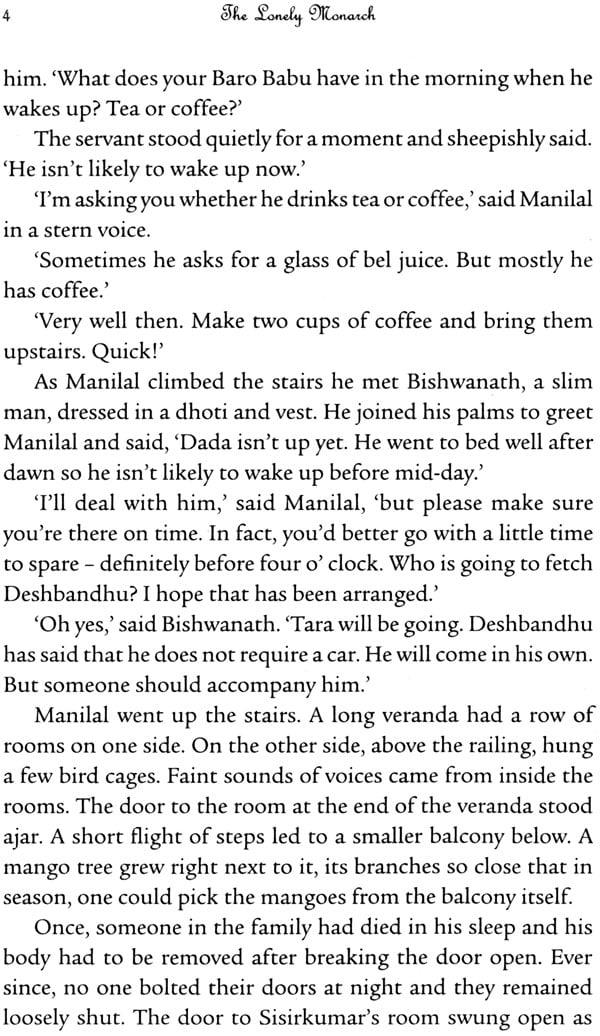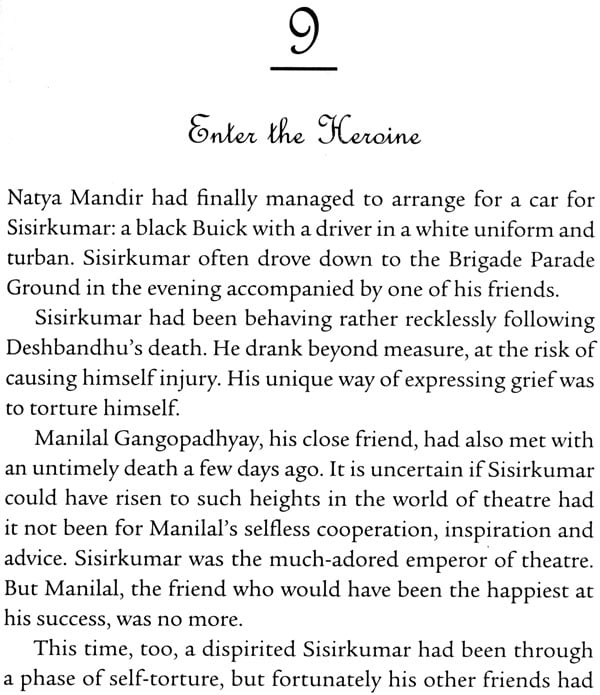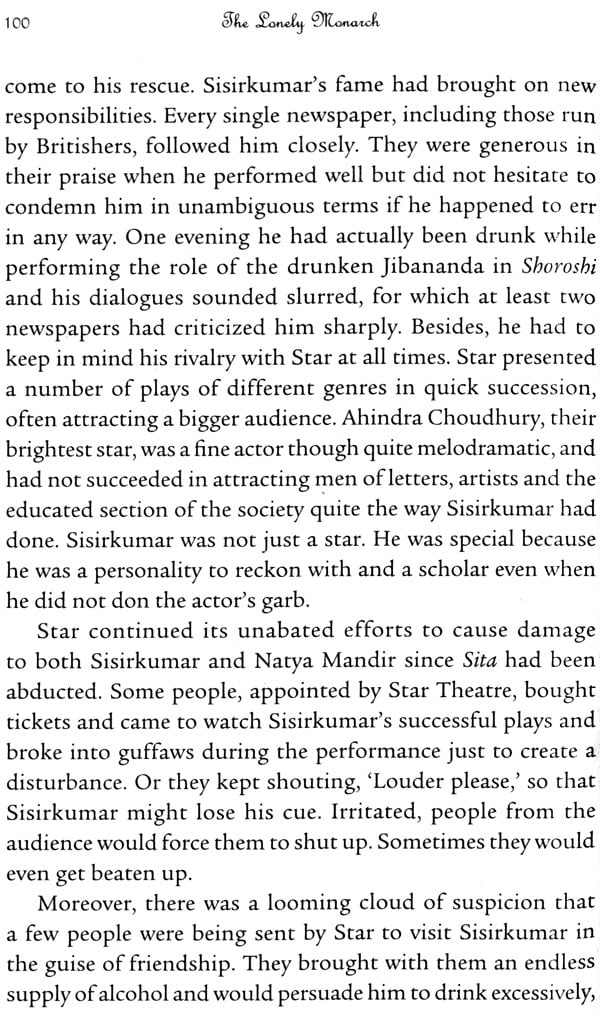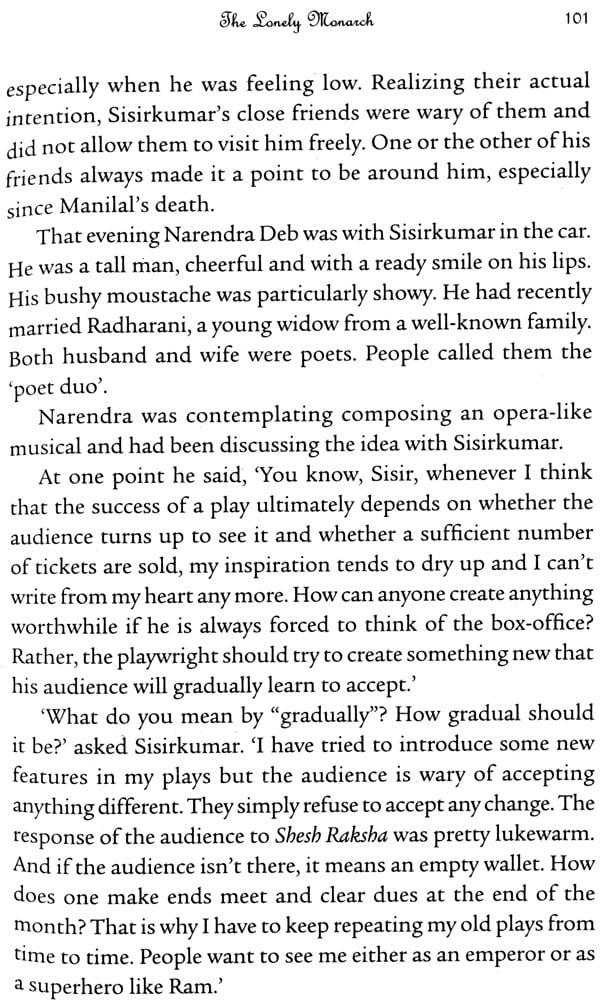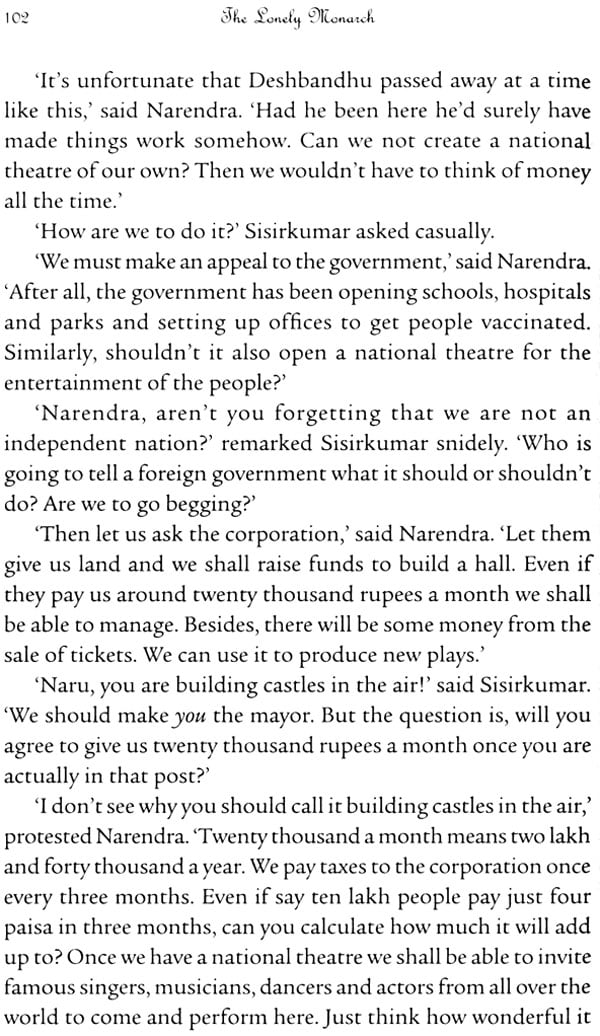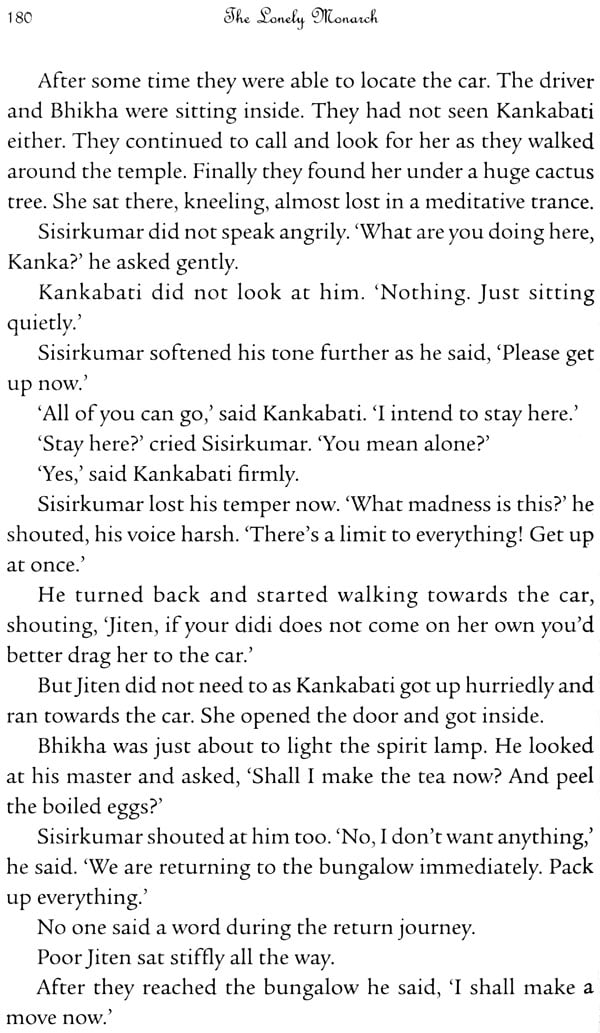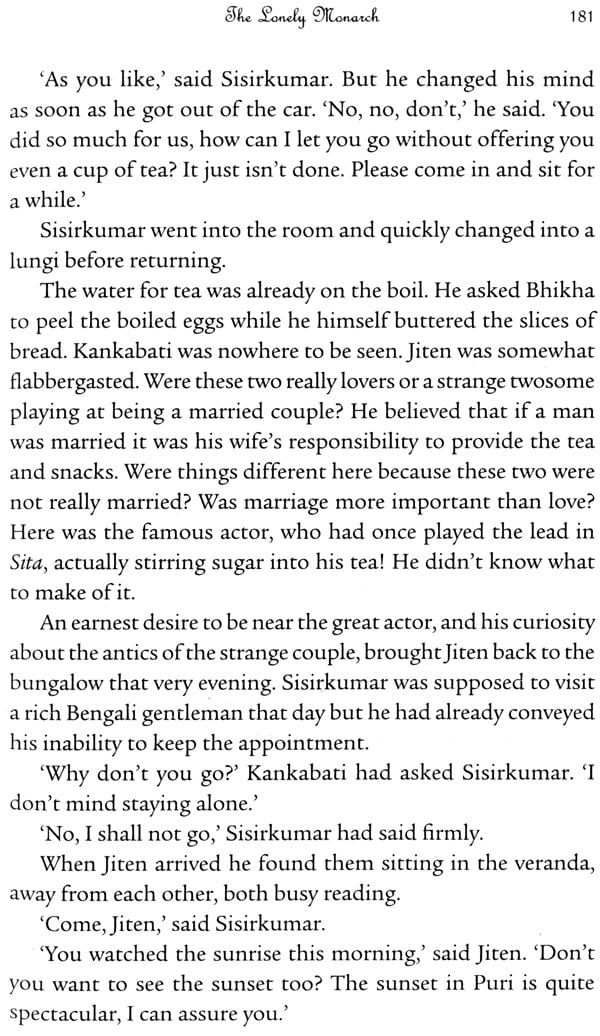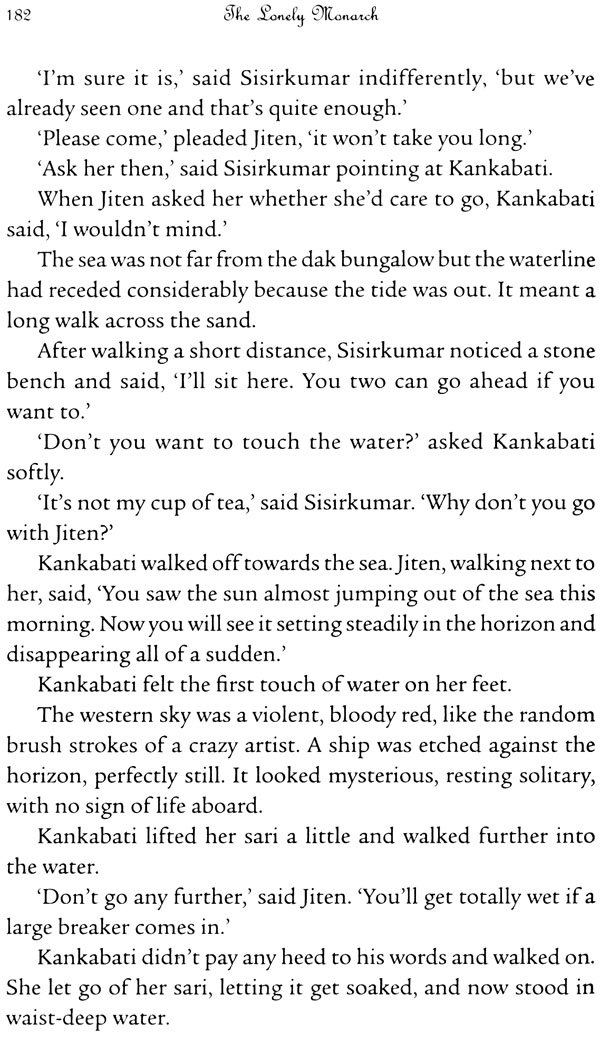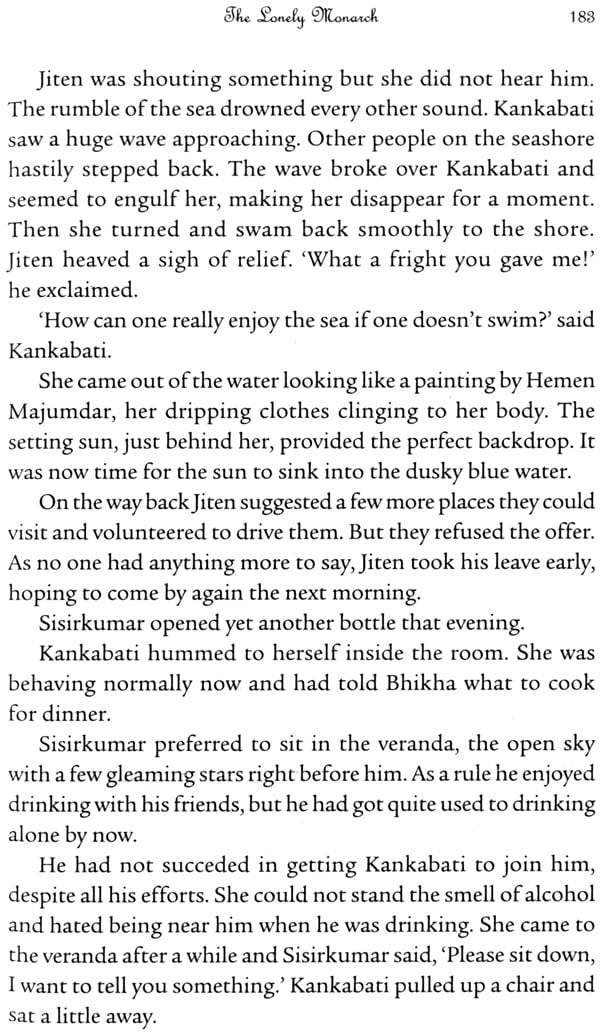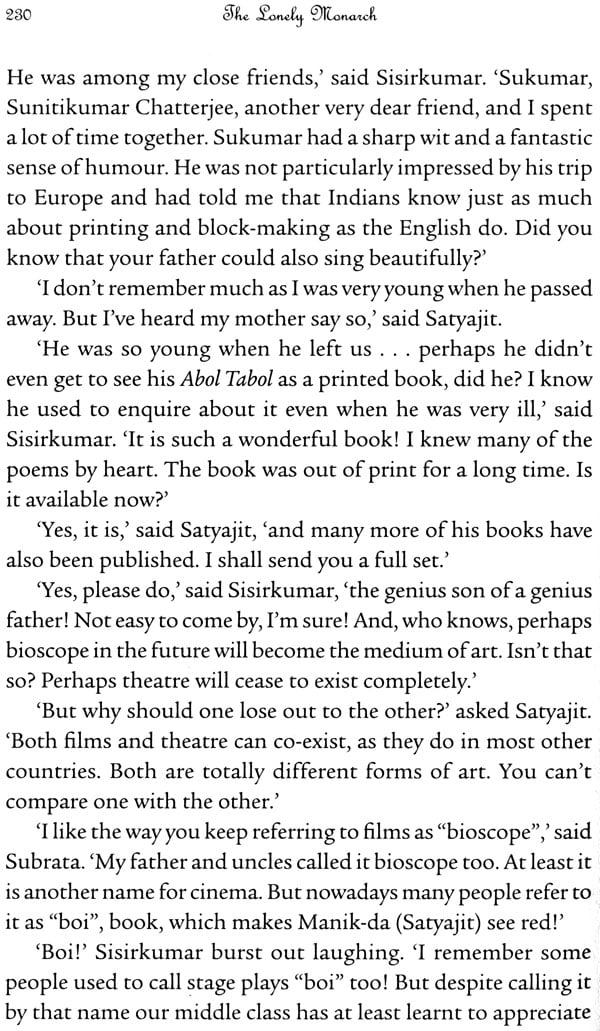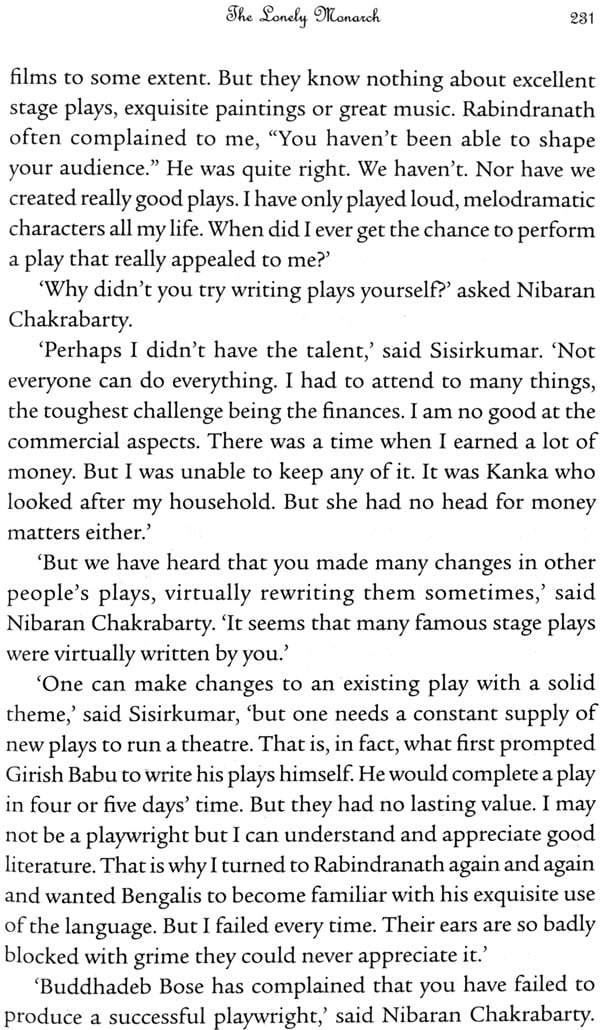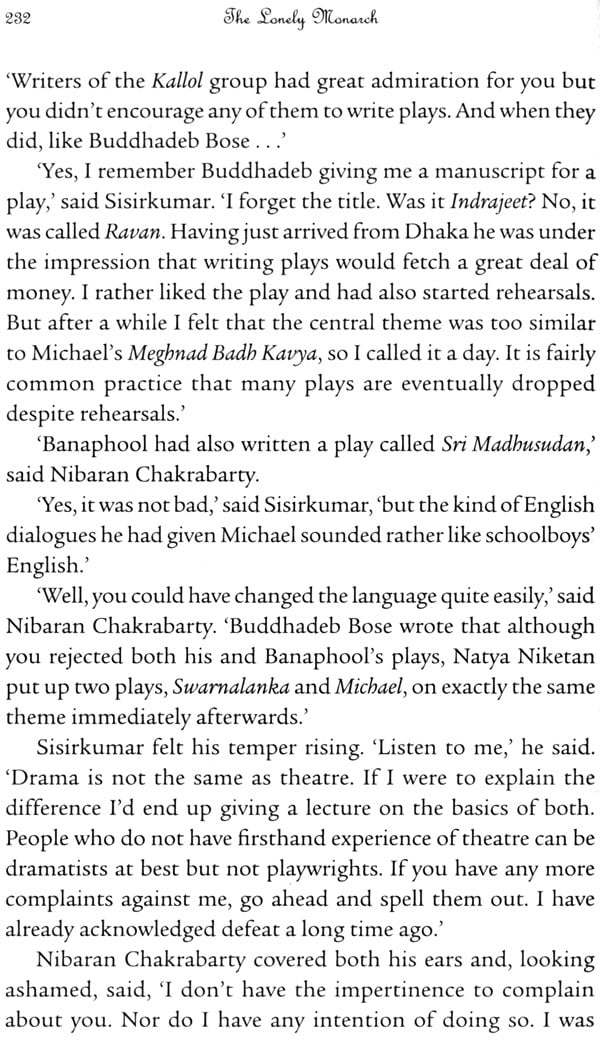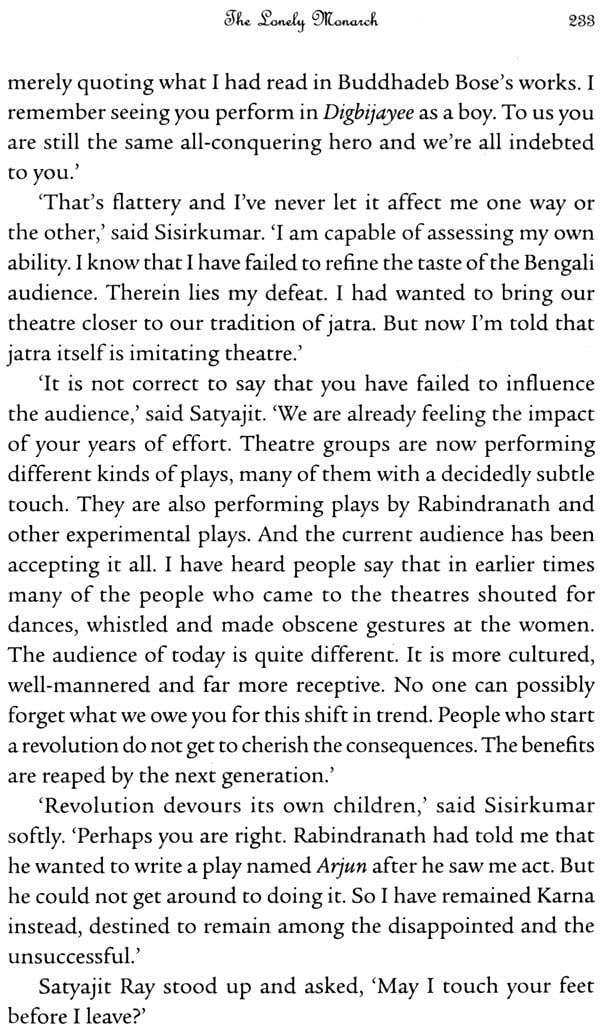
The Lonely Monarch
Book Specification
| Item Code: | NAG632 |
| Author: | Sunil Gangopadhyay |
| Publisher: | Hachette India |
| Language: | English |
| Edition: | 2005 |
| ISBN: | 9789350096284 |
| Pages: | 246 |
| Cover: | Paperback |
| Other Details | 7.5 inch X 5 inch |
| Weight | 180 gm |
Book Description
About the Book
Abrilliant Performer, He is loved and respected by his peers, adored by spectators and acknowledged as a master by Rabindranath Tagore himself. Yet, Sisirkumar remains Passionately committed to a singular dream: to steer his audience away from the raucous melodrama that has come to be called entertainment toward an evolved enjoyment of stage performance.
This searing novel brings to life Sisirkumar’s relentless efforts to free the stage of Western influences and mediocrity; his frustration and disillusionment with apathetic patrons and obdurate audiences; his ruinous weakness for alcohol; and the impossible ideals that alienated him from his closest friend and the women in his life.
This translation of Sunil Gangopadhyay’s spirited recreation of the tumultuous life of a remarkable man and a defining era in the history of Indian theatre is a tribute to the might and resilience of the creative spirit.
About the Author
Poet, novelist, playwright and children’s writer, Sunil Gangopadhyay (1934-2012) was an eminent and prolific literary figure. His literary career began in 1953 with the publication of the first issue of Krittibas, a poetry magazine of which he was founder editor. Although a popular writer in different genres, he considered poetry to be his first love. He is the author of the Sahitya Akademi Award-winning magnum opus Sei Samay (Those Days). Pratham Alo (First Light) and Purbo-Pascbim (East-West) are his other well-known novels. He has been awarded the Bankim Puraskar, Ananda Puraskar and Saraswati Samman besides other awards for his literary Contributions.
Swapna Dutia has been writing, mostly for children, for the last four decades and has more than forty titles to her credit, including translations. She was awarded a fellowship from the Ministry of Culture, Government of India, for translating a selection of poems by twenty contemporary Bengali poets into English. Her translations of works by Rabindranath Tagore, Premchand, Parashuram, Sunil Gangopadhyay, Ashapurna Debi, Lila Majumdar, Samaresh Basu, Samar Sen, Shankha Ghosh, Shrikant Varma and others have been published in literary magazines and by English-language publishers.
Translator’s Note
I met Sunil Gangopadhyay for the first time in 1982, just over thirty years ago.
I was at Ananda Bazar Patrika’s office in Calcutta to meet Nirendranath Chakrabarty, then editor of Anandamela, a popular children’s magazine. Nirendranath Chakrabarty was busy in a meeting so I asked quite casually if I could see Sunil Gangopadhyay instead. Those were the days when anyone could walk into a newspaper office and meet whoever they wanted provided he/she was available at the time. One of the clerks pointed out Sunil-da’s room and I walked in. Sunil-da, who was busy writing, looked up with a frown but asked meto take a seat as soon as he heard that I was a writer - albeit a writer of children’s books - based in Delhi.
Although I had enjoyed Sunil-da’s Sei Samay (for which he was to receive the Sahitya Akademi Award four years later), I was not particularly fond of his other novels. I preferred his poems and short stories, many of which I thought brilliant.
And of course I had enjoyed his Sabuj Dwiper Raja (both the novel and its film version) and his stories for children. As we got talking I blurted out the names of some of his novels which I had not liked and told him as much. Instead of taking offence he merely smiled and said that he did not like everything he wrote and didn’t expect his readers to either! I asked him if I could translate some of his poems and short stories. ‘Of course,’ he said.
My translations of a few of his poems appeared in Indian Literature and Heritage magazines a few months later and he asked me if I would translate one of his articles on Tagore. It was the beginning of a spontaneous, meaningful bond, kept alive through occasional letters and phone calls, and meetings at functions whenever he came to Delhi. I translated many more of his poems and some short stories over the years, which were published in various magazines and anthologies.
Yet, I never felt like translating any of his novels as I did not feel close enough or interested enough in them - until I came across Nihsanga Samrat, which I had picked up casually, not really knowing what to expect. I knew very little about the theatre scene in Bengal and even less about the people involved in it. Sisir Bhaduri was no more than a name to me; I merely knew that he had been an actor of repute. But once I started reading the book I was fascinated, enthralled and unable to put it down. Even though the novel did not have the wide canvas of Sei Samay, Nihsanga Samrat brought to life another era, as it did the celebrities who had been mere names before, and Sisirkumar Bhaduri, the ‘lonely monarch’, seemed more real than anyone I had met in person. Sunil-da’s writing breathed life into every scene, every sequence, and I loved the crisp dialogues that rang true and sounded so convincing.
I collaborated closely with Sunil-da on all my translations of his work and normally called him up if I needed any clarification. Nihsanga Samrat has many quotations from poems and as I have always been rather finicky when it comes to translating verse (feeling strongly that the feel and music of the original should be retained even in translation), I told him that it was beyond me to do justice to some of the poems by Tagore. He said, ‘Translate as much as you are comfortable doing. It need not be the whole extract, just enough so people understand which poem we are talking about.’ I had asked him ifhe liked the lines I had translated. ‘Yes,’ he had said, and had concluded his reply (dated 8 December 2011) with the words, ‘Kaajtake egiye niye jao’ (proceed with the project).
That was his last letter to me. I really wish he had lived to see the work completed.
Postscript: Normally a translator’s note should not require a postscript. But as Nihsanga Samrat is the chronicle of an important era and mentions several celebrities whom people outside Bengal might not know, I felt I should include here a few words about some of the important personalities and the time when these celebrities were around in relation to the protagonist of the book, Sisirkumar Bhaduri (1889-1959).
Michael Madhusudan Dutt (1824-1873), a famous poet and dramatist especially remembered for his blank verse.
Dwijendra Lal Roy (1863-1913), poet and playwright.
Gaganendranath Tagore (1867-1938), a self-taught artist who founded the Indian Society of Oriental Art with his brother Abanindranath Tagore in 1907. He was Rabindranath Tagore’s nephew.
Chittaranjan Das (1870-1925), a revolutionary freedom fighter, affectionately called ‘Deshbandhu’ (friend of the nation).
Abanindranath Tagore (1871-1951), artist and writer; also the principal founder of the Indian Society of Oriental Art. The younger brother of Gaganendranath, he too was a nephew of Rabindranath Tagore.
Saratchandra Chattopadhyay (1876-1938), one of the most popular and widely read Bengali novelists.
Satyendranarh Datta (1882-1922), poet, often described as ‘the wizard of rhymes’.
Rakhaldas Bandopadhyay (1885-1930), a historian of repute.
Jamini Roy (1887-1972), one of the first ‘modern’ artists.
Manilal Gangopadhyay (1888-1929), writer and editor.\
Narendra Deb (1888-1971), poet and playwright.
Hemendra Kumar Roy (1888-1963), editor and writer, who later became famous for his adventure and fantasy stories for children.
Kalidas Roy (1889-1975), poet.
Sunitikumar Chatropadhyay (1890-1977), linguist, educationist and litterateur.
Srikumar Bandopadhyay (1892-1970), scholar and writer
Dilip Kumar Roy (1897-1980), musician, musicologist and writer.
Kazi Nazrul Islam (1899-1976), the ‘rebel poet’ of Bengal.
Achintyakumar Sengupta (1903-1976), writer, part of the literary movement known as Kallol.
PremehdraMitra(1904-1988), writer and poet, who also belonged to the Kallol group.
Budhhadeb Bose (1908-1974), writer, poet and playwright, also part of the Kallol group.
